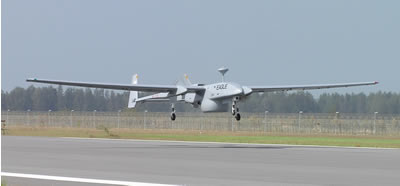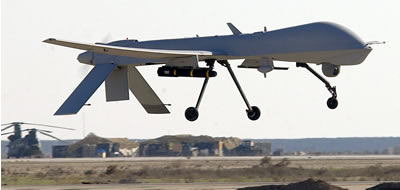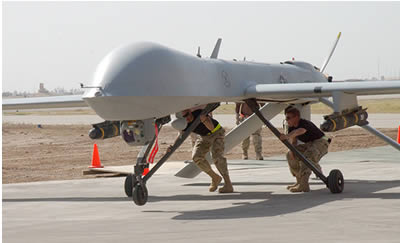Persistent assets are employed to assist ground units and provide real-time, high resolution imagery. Medium Altitude Long Endurance (MALE) platforms, such as the General Atomics Predator, Northrop Grumman/ IAI Hunter and EADS/IAI Eagle operating at medium altitudes, from 15-25,000′ are designed to use multiple sensors on a single mission. Usually these assets will support operations in a specific region, Tasked with Imagery Intelligence (IMINT) missions include, round-the clock gathering of electronic and communications intelligence (ELINT/ COMINT), as well as, providing communications support. Since MALE drones are operating at lower altitudes, they transmit more detailed imagery of targets. As a theater asset they are also more responsive for retasking, changing their flight routes to support evolving needs. At their cruising altitude, MALE platforms can evade most adverse weather conditions. Introduction of deicing systems, such as those used on EADS/IAI Eagle-1 and Thales/Elbit Systems WK-450 enable mission planners to launch and retrieve UAVs through adverse weather and icing conditions, which usually hinder UAV activities at lower altitudes.
Some MALE platforms have evolved into armed Hunter-Killer platforms. Representing this trend is the USAF Predator B system. As a Hunter Killer platform these systems integrate on board everything required to detect, identify, localize, designate and strike a target. These elements include wide area covering radar and narrow-field of view EO/IR sensors covering wide area, with the capability to “Spot” on a specific target for closer identification.
These sensors are used for target detection, identification and tracking. Some system elements are employed at the ground segment, particularly image processing and automation. Such process can detect suspicious traces leading the operators to a potential target. The platform also has designation means, including laser designator and geo-location capability, which can be fed to an on-board weapon.
When deployed in the hunter-killer role, Predator B maintains a low profile at high altitude, orbiting and striking targets from relatively long distance, few minutes after they are detected. Use of low signature weapons, such as JDAM, laser guided bombs or Viper Strike means that the UAV can attack without emitting a visual flash or smoke “puffs” missile launch signatures.
This feature covers the following chapters:
- Unmanned Systems (UAV) Persistent Surveillance
- HALE UAV Systems – UAS High Flyers
- MALE UAV Systems – Persistent UAS Platforms
- Tactical UAVs
- Miniature/micro uav Systems
- Turning raw data into actionable intelligence
- Enhanced Vision
- Electro Optical Stabilized Payloads
- SAR systems
- Target Geolocation
- Computer Mapping & Modeling
- Automatic Change Detection Applications
- UAVs role in Convoy protection and IED patrols






















